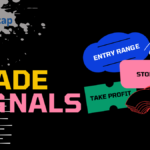Key Takeaways
- Ethereum’s transition to proof of stake could happen this summer. Preston Van Loon, an Ethereum core developer, informed a panel at the Permissionless conference that there is momentum underneath finalising the move within the next three months.
- This week, Ethereum client developers announced the Merge’s final phase of testing, in which it will be deployed on the Ropsten testnet.
- Ropsten is the nearest development network to the real thing, so it will be able to put the Merge and PoS to the test. Ropsten testing will begin on June 8, according to Ethereum client developers.
The Merge is a significant upgrade that moves Ethereum’s network consensus process from proof-of-work mining to proof-of-stake mining (PoS). It’s a huge step because it’ll cut Ethereum’s energy use by more than 99 percent, which should satisfy opponents, legislators, and environmentalists.
The “difficulty bomb” is a mechanism in the proof-of-work mining process that increases the difficulty level or complexity of “puzzles.” As the computations become more difficult, miners will experience longer block times and lesser rewards.
Ethereum has been using PoW since its inception, but is now switching to PoS. This was always the intention because PoS is considered to be more secure than PoW, requires far less energy, and allows for the implementation of novel scaling techniques.
Preston Van Loon, a core developer in the Ethereum (ETH) ecosystem, told participants at the Permissionless event that the shift, dubbed the Merge, would take place in August if everything goes according to plan.
Van Loon told the crowd of 5000 that the team was working to complete the changeover before the so-called “problem bomb” degraded the community as planned.
It’s a component of the blockchain that deliberately slows down the network. The goal was to encourage developers to pursue proof of stake while also making it difficult for miners to remain on the proof-of-work chain after the move. This month, core developers chose not to shift their focus away from The Merge, which is now under testing. Its accomplishment would eliminate the requirement for the difficulty bomb to be defused.
The true reason people are anticipating The Merge is that it is predicted to reduce ETH issuance by 90%. Less ETH in circulation implies less supply and more demand, which should drive the coin’s price upward. According to CoinMarketCap data, 1 ETH is currently worth $2,000 USD. The Merge, according to the most bullish Ethereum bulls, has the potential to push the asset’s price back over its all-time high of $4,891 achieved in November 2021.
Tim Beiko, an Ethereum developer, stated on April 11 that The Merge had been postponed once more. Regardless of a successful “shadow fork test,” Beiko stated that The Merge would not take place in June as planned. According to Beiko, builders must move quickly to avoid the problem
bomb; otherwise, they may need to insert yet another replacement to delay the explosion.
“If consumer developers do not believe they will be able to deliver The Merge to mainnet before block instances become too slow, it will have to be delayed once more.”
Ropsten Testnet Merge Transition Scheduled for June 8th:
According to Terence Tsao, a software engineer working on Prysm’s production client for Ethereum 2.0, Ropsten, the main public testnet of the Ethereum network, will switch from a Proof-of-Work (PoW) to a Proof-of-Stake (PoS) consensus mechanism in June. In a tweet on Wednesday, Tsao mentioned June 8 as a possible merge transition date.
As an aspect of the much-anticipated consensus mechanism transition, Ethereum developers used shadow forks to stress-test the platform’s PoS capabilities last month, identifying possible bugs and other troubles in the code. Shortly after the testing phase concluded, Ethereum developer Tim Beiko announced that “the merge” would be postponed until “a few months after” June.
If The Merge is successfully completed in August, the final milestone on the Ethereum, formerly known as Eth2, roadmap is the sharded chains upgrade, which is scheduled to go live in early 2023. However, until then, the community will continue to rely on layer-2 networks such as Polygon and Optimism to deal with scalability and high transaction volumes.
Following the discovery of “bugs ranging from sync code to request timeouts” during the testing of three shadow forks, Ethereum Foundation developer Parithosh Jayanthi suggested that there is still a fair amount of trial and error to go.
Ether (ETH) has seen a significant increase in price over the last 30 days, rising 20.5 percent to $3,126 at the time of writing.
Scaling enhancements such as EIP-4844 are also in the works. This one expands on the side chain concept by introducing a new type of transaction known as “Proto-Danksharding,” which will process “blobs” of data to improve blockchain throughput.
However apart from environmental advantages, another additional benefit of the Merge is a decrease in ETH issuance. There will be no more Ethereum mining, and the transaction fee burning mechanism introduced with EIP-1559 should result in the asset’s deflationary issuing.










